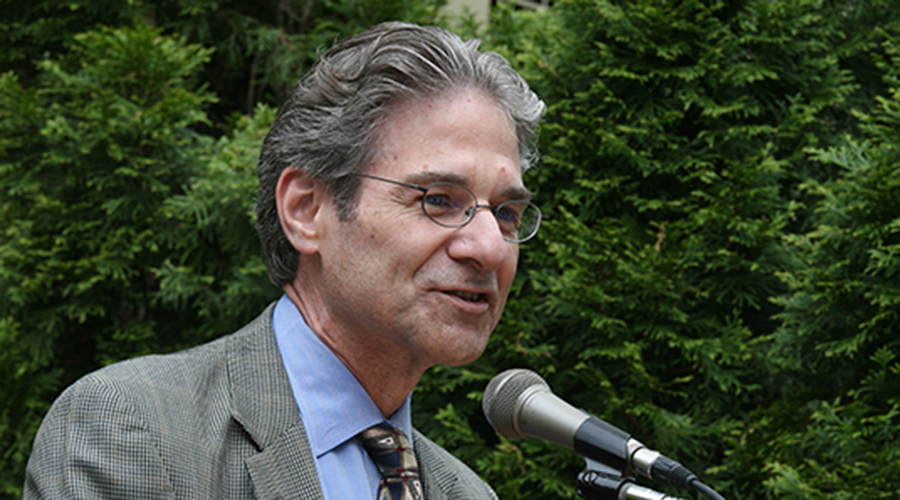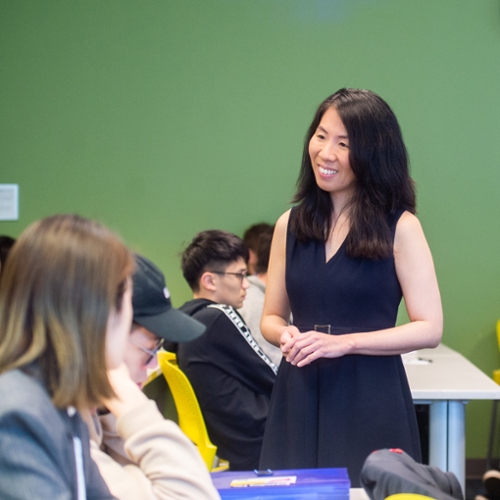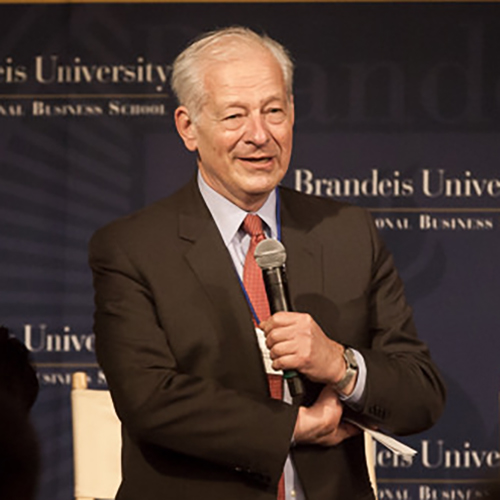
Finance Prof. Robert Reitano
Prof. Robert Reitano has a passion for cooking.
He knows, for instance, that bread will rise when all the ingredients are combined in the right way and then baked. But none of his cookbooks tell him why.
The same is often true with finance textbooks.
“That’s really where people go wrong,” said Reitano. “They will misapply a ‘cookbook’ formula because they were never taught that the formula depended on certain mathematical assumptions."
Reitano's latest passion project seeks to change that. The 30-year veteran of John Hancock is in the midst of writing a nine-volume reference guide that explains how and why many of the formulas and mathematical assertions in finance work the way they do.
“It provides the foundational mathematical ideas and develops them in detail,” said Reitano. “If somebody has a question they'll hopefully be able to find their answer. And if that answer requires math they don't know, my books are pretty well internally-referenced and will point them in the right direction. Eventually, they get to the point where they understand it all.”
Foundations of Quantitative Finance isn’t meant to be read through cover to cover. Rather, it’s designed to be a handy reference for students, researchers and professionals alike.
So far, Reitano has completed six volumes and published them on his website for free downloading. In a recent interview, he explained his approach to both writing the books and teaching in the classroom.
They’re not explaining the math behind it all. And the biggest reason why is there’s a whole world of finance to know — markets, instruments, trade, derivatives and how they’re all designed. It’s a wealth of information, and most finance books have such a large challenge just in trying to teach readers about financial markets and how they behave. So if you take a thousand-page book on options of derivatives, you might also have to add several hundred pages to fill in the underlying mathematics. It's just not feasible.
I’m trying to provide step-by-step logic to help students fill in the gaps. The goal of the books is really given away by the title: Foundations of Quantitative Finance. It provides the foundational mathematical ideas and develops them in detail. If somebody has a question, they’ll hopefully be able to find their answer. And if that answer requires math they don't know, my books are pretty well internally-referenced and will point them in the right direction. Eventually, they get to the point where they understand it all.
I think the commonality between my writing and my teaching is the responsibility to clearly communicate to my audience something that might be pretty technical — and to do it in a way that accommodates their background. When I’m in the classroom, I work hard to figure out how to explain a particular concept to students in a way that will resonate with them. Sometimes you miss the mark. For example, I’ll present something and I can just tell by the body language and the eye contact that they're a little lost. So I have to say, ‘OK I’ve got to change my approach’ and I try to look for that connection. When you’re writing, you’re trying to do the same thing but you don't have 30 or 40 people looking at you. You don't have that body language or feedback. You just have this mental image of who you think your reader is. And the challenge is you try to explain what you're doing as clearly as possible to an anonymous audience.
That’s right. And I think when you’re teaching — and when you're writing too — you have to put in a little extra to make what you communicate not only interesting and exciting but relevant. And maybe on your best day you can communicate the beauty of it. What I do in mathematics — I really look at it as beautiful stuff. It excites me a lot. And so when I communicate, yes, I want to communicate clearly. But without a little passion, this can feel pretty dry. So I really try to share the excitement, interest and relevance to make sure my students not only understand a calculation but understand why they want to understand it in the first place. That’s where it all comes together.
Featured Stories
News Categories

December 23, 2019
MBA candidate Paul Schulman is a 2019 Reaching Out fellow
December 19, 2019
Why isn’t there more diversity in teaching?
December 19, 2019
Making diversity matter
December 17, 2019
Good genes, smart goals, passionate people